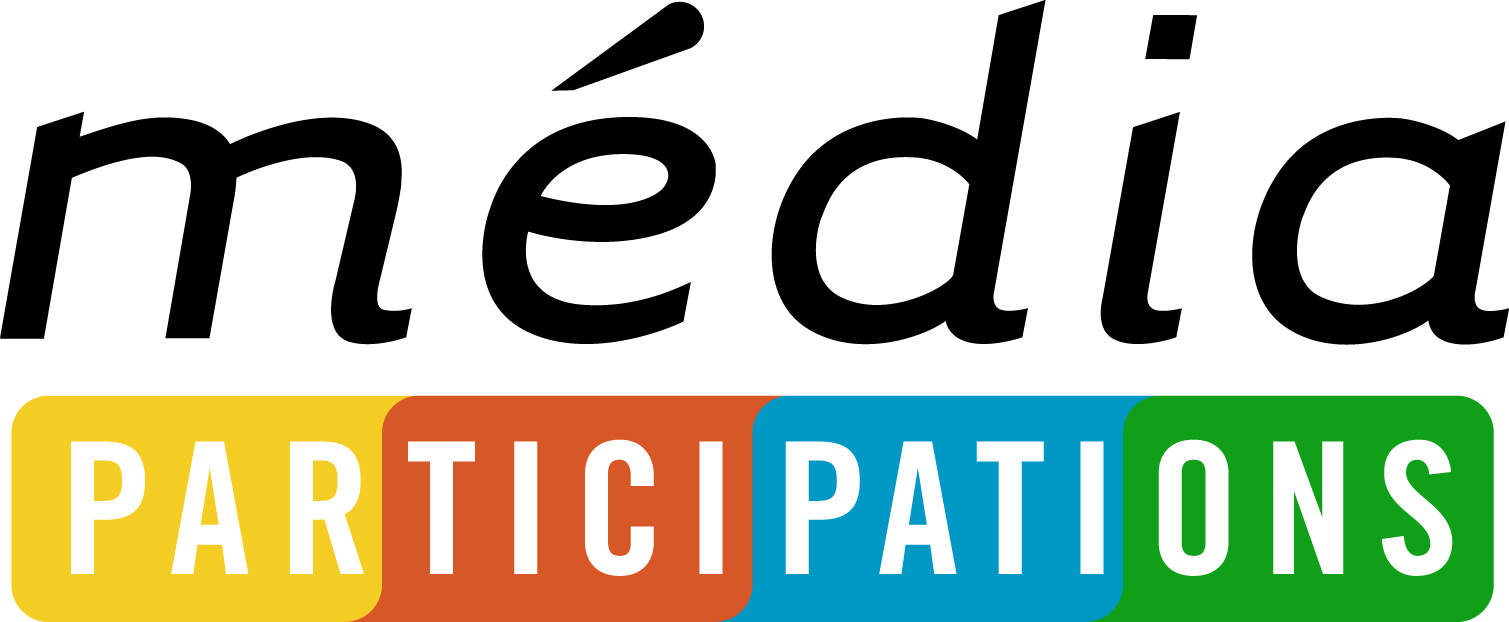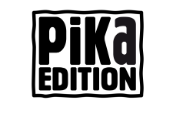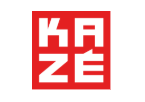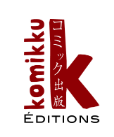Synthèse
Since 2020, the global manga market has experienced significant growth, particularly driven by the popularity of digital formats and new works. In Japan, the sector saw a 23.01% increase in value, with digital manga sales outstripping paper manga sales for the first time, reflecting a shift in consumption habits. The rise of South Korean webtoons also contributed to the market's expansion, with growth projections estimating a global market size of $56.1 billion by 2030. In France, manga's consumer base has broadened, with an increase in female readership and a wider age demographic engaging with the genre. Scantrad, the illegal online distribution of scanned manga chapters, poses a significant challenge to the market, with an estimated loss of €1.6 billion for Japan in 2020 due to piracy. Despite this, the French market remains less digitalized, with a preference for paper formats. The Covid-19 pandemic also played a role in boosting readership, with initiatives like the French government's "Pass Culture," providing funds for cultural purchases, further stimulating the market. Overall, the manga market has revitalized, marked by innovation, digital consumption, and strategic responses to piracy and market demands.
Trends and Dynamics of the Manga Market in France
The French manga market has seen a resurgence in popularity, particularly since the onset of the Covid-19 pandemic. This renewed interest is reflected in a variety of consumer trends, technological impacts, and external cultural influences that shape the demand for mangas in France. A primary characteristic of the manga readership in France is its predominantly young demographic. A large portion of manga buyers are under 40, with a significant number of these being women. The consumer base also displays an affinity toward digital formats. However, in the French market, there's a notable attachment to the paper format despite the increasing trend of digitalization.
The demand analysis shows several fascinating elements, with young readers under the age of 30 representing a majority of the manga audience. Men, making up around 55% of readers, slightly dominate the demographic profile. Consumer preferences veer strongly toward the Shonen genre, which includes themes of action and adventure appealing mostly to boys under 15.
Another point of interest is the spending trend; consumers dedicated to manga spend annually between 100 and 300 euros, showcasing their loyalty and enthusiasm for the medium. A significant driver for the surge in manga consumption could be linked to the various adaptations that mangas receive. Besides being available in print, mangas often transform into animated series or movies, broadening their appeal.
The growth of French interest in Japanese anime, particularly during the pandemic's stay-at-home periods, contributed to an amplification in manga sales. Notably, measures such as the "pass culture" introduced by the French state, which grants young people 18 years old a 300 euros budget for cultural purchases, played a role in this growth, with manga claiming more than half of the book sales generated by the program. On the flip side, the issue of piracy, specifically through scantrad, poses a significant challenge.
Scantrad, the unauthorized scanning and translating of manga chapters, impacts the market notably, with losses estimated in the hundreds of millions to billions of euros range. In light of this, publishers and governmental bodies are pushing initiatives to combat this form of piracy effectively. In summarizing the market overview, the French manga sector stands out for its youthful demographic profile, predominantly male readership, a proclivity for Shonen content, and strong resistance to the complete digitization of the medium. The affordability and range of manga could be contributing factors to the growing market, supplemented by state initiatives encouraging cultural spending among youths. Piracy poses also risks to the ecosystem.
Dominant Forces in the Manga Landscape: Key Publishers and Distributors Shaping the French Market
The French manga market, a bustling hub of cultural exchange and entertainment, is upheld by a network of key players who have carved out significant roles for themselves in the industry. The market is marked by a constellation of publishers and distributors, whose influence and strategic operations determine the flow of manga titles from creators to consumers.
- Glénat stands as one of the pioneering forces in the French manga industry, having been responsible for introducing translated manga to France in the 1980s. This publisher boasts a rich catalog that includes classic titles like "Dragon Ball," among others, that have defined and continue to shape the manga scene in France. Glénat's legacy is not merely historical; it remains a steadfast contributor to the market, nurturing and presenting new talents and stories to a hungry audience.
- Shueisha emerges as another titan of the manga world, albeit from the shores of Japan. This publishing house is not only famed for its own lineup of legendary mangas, such as "One Piece," but also for its strategic moves within the global market, including the acquisition of stakes in other publishing entities to solidify its presence and influence. The fusion of Shueisha's intellectual capital with local French know-how, through VIZ Media Europe, exemplifies the geographical and cultural bridges built within the manga world.
- Crunchyroll has taken the mantle as a pioneer in adapting to the ever-evolving media consumption habits. Through their platform, they offer a myriad of anime, translating the rich stories of manga into animated forms that reach audiences who may prefer the screen to the page.
- In a market characterized by significant digitalization, Hachette, Interforum Editis, MDS, and Delsol are the behemoths that control the intricacies of manga distribution and dissemination. These entities are critical cogs in the machinery that ensures timely, extensive, and effective distribution of mangas to various outlets across France. Their extensive networks and infrastructural capabilities allow them to maneuver large volumes of manga, making them indispensable partners for publishers looking to make their mark in the physical manga market.
- Also noteworthy are specialized bookshops like Komikku Éditions in Paris, which not only offer meticulously curated manga selections but also enhance the consumer experience with manga-related merchandise.
à la compréhension de ce marché
Détail du contenu
 Informations
Informations
- Nombre de pages : 30 pages
- Format : Version digitale et PDF
- Dernière mise à jour : 06/02/2023
 Sommaire et extraits
Sommaire et extraits
1 Market overview
1.1 Definition and scope of study
Manga are books halfway between comic strips and American comics. A category in its own right, a manga can be recognized by certain characteristics that distinguish it from traditional Franco-Belgian comics:
- Manga is read from right to left,
- Drawings are generally in black and white,
- They are often published episode by episode.
Born in Japan during the modernizing and nationalist Meiji era, the first mangas were inspired by European cartoons and published in newspapers. Influenced by post-war American comics, mangaka began to draw their manga in the form we know today. Imported into France in the 1980s and translated by Glénat, they enjoyed growing success with iconic titles such as Dragon Ball and One Piece. Publishing houses, mostly French, gradually established themselves and cornered the market. Publishers are issuing tomes, a collection of chapters usually published weekly in Japan. Usually, a manga's story is broken down into arcs told over several chapters.
However, there are sub-genres within manga. The most common, with their target audience, are :
- Shônen (boys under 15 - action and adventure)
- Seinen (teenagers aged 15 to 24 - action and psychology)
- Shôjo (girls aged 10 to 18 - romance)
- Josei (adult women - romance and action)
The French manga market faces a number of challenges, such as the growing prevalence of digital technology for books, comics, etc., which makes pirated versions of manga freely available and threatens the ecosystem. The main mission of the new mangas is to appeal to the new generation, born after 2000 and 2010, and perpetuate the craze that had been created among previous generations.the challenge seems to have been met, with the French market doubling in value between 2020 and 2021.
1.2 The global market: the case of Japan and the rise of Korea
The case of Japan:
According to the AJPEA (***), the manga market in Japan regained some color from **** onwards, with growth of **.**% in value between **** and ****. The covid pandemic was beneficial for the manga market, as evidenced by the market 's exceptional **.**% growth in value between **** and **** .
The market value of ***.* billion ...
1.3 A growing French market that has expanded rapidly since the Covid crisis.
France is considered the world's second-largest manga market by volume, according to the press. [***]. While this information is difficult to verify, it nevertheless remains true that France is one of the largest markets for this product, as demonstrated by the popularity of manga in France.
Development of the Comics/Manga sub-sector ...
2 Demand analysis
2.1 Consumer typology
Consumer typology:
According to a joint study by GFK - Growth From Knowledge - and the Syndicat National de l'Édition, in ****, the average buyer is characterized by his or her young age - more than **% of readers are under ** - and by its tendency to be more male - **% of ...
2.2 The rise of scantrad
Any cultural work can be stolen and copied. Illegal downloading has made headlines in the media, with Game of Thrones breaking records in this area. Manga is no exception to this phenomenon, quite the contrary. Scantrad is a process that involves scanning pages from chapters published in Japan in specialized magazines ...
2.3 A booming market driven by new works.
A market that seemed to be running out of steam is once again dynamic:
If before the covid period the manga market seemed to be running out of steam, with stagnant growth and a drop in the number of "manga" searches on the Internet - see graph below - it now ...
3 Market structure
3.1 Market organization: Value chain and player margins
Currently fragmented into a number of players in France, the manga market is a sub-section of the publishing market as a whole. As a result, a few major groups have positioned themselves against others, independent or not necessarily successful in emerging, whose market shares remain minor.
A study by MangaMag shows ...
3.2 Distribution and broadcasting
Representing more than half the sales costs of a manga volume, distribution and diffusion play an essential role in the book chain. The first stage is completed by distributors and diffusers. These are large companies with substantial sales - €*** million for Interforum Editis. This concentration is somewhat forced, since the role ...
3.3 Main publishing houses
Source: ****
This market is controlled by a few major publishing groups, such as Glénat and Pika Éditions, whose main activity is not necessarily manga distribution. Other independent publishers also share a relatively small share of the market - **.*% in ****.
3.4 Conventions: a privileged means of communication
The main conventions take place in Paris
Paris Manga is a bi-annual convention that attracts ***,*** people every year. Traditionally held at the Porte de Versailles exhibition center, the latest edition was held at Paris Nord, Villepinte. Celebrating Japanese culture in its entirety - manga, anime, merchandise, music and fashion - numerous ...
3.5 The gradual growth of French manga
French-style manga, also known as Manfra or Franga, are comics produced by French-speaking authors whose work is inspired by the codes of Asian comics.
The manfra segment is very young, but is only just beginning to develop. In ****, out of *** mangas sold by Glénat, only ten or so were by ...
4 Offer analysis
4.1 Types of manga
Manga is sold in volumes, each containing several chapters. The story of a manga is broken down into arcs, each sold in one or more volumes. The story thus has a meaning, and generally continues chronologically. There are several categories of manga:
Kodomo, aimed at children under **, the story is often ...
4.2 Prices
Impact of rising paper prices on manga prices:
Because of the inflation in the price of paper (***), which already represented *% to *% of the price of a book,[***], the price of manga has risen. Depending on the publisher, it has risen by around ** centimes to * euros. The price of * euros appears to ...
4.3 Sales rankings and comparison with Japan
Sales rankings in France in **** :
Source: ****
Several trends stand out in this best-seller ranking:
The predominance of historical series: One piece and Naruto appear in the ranking, while Naruto, released in ****, and One Piece, released in ****, are among the oldest mangas on the French market. While One Piece has still not ...
5 Regulations
5.1 Regulatory framework
Manga meets the tax definition of a book: "a book is defined as a printed set, illustrated or not, published under a title, the purpose of which is the reproduction of a work of the mind by one or more authors for the purposes of teaching, the dissemination of thought and ...
5.2 Growing scantrad regulations
The excesses of certain readers, and in particular scantrad, which represents a gigantic loss for Japanese publishing houses, have led them to take action against the illegal distribution of chapters. Shûeisha, Japan's leading manga publisher, has promised to deal "severely with any illegal copies found on the Internet".
The first ...
6 Positioning the players
6.1 Player segmentation
- Shûeisha
- Pika Édition
- Kana Editions (Dargaud Media Participations)
- Kurokawa Univers Poche (Editis)
- Kazé Crunchyroll
- Ototo Euphor
- Delcourt Groupe - Soleil Manga
- Nobi Nobi Pika Editions
- KiOon
- Komikku Éditions
- Delsol Diffusion
- Interforum (Editis Groupe)
- Scantrad
- Jaimini’s Box
- Media Participations
- Bamboo Edition
- Mangas.io
 Liste des graphiques
Liste des graphiques
- Valeur des ventes en milliards de Yens sur le marché japonais du manga
- Valeur des ventes en milliards de Yens sur le marché japonais du manga, segmentation entre les ventes numériques et papier.
- Evolution des ventes de mangas papier par canal de distribution
- Différence de profils dans les marchés de l'édition
- Profils des acheteurs de mangas par genre
Toutes nos études sont disponible en ligne et en PDF
Nous vous proposons de consulter un exemple de notre travail d'étude sur un autre marché !
Dernières actualités
Entreprises citées dans cette étude
Cette étude contient un panorama complet des entreprises du marché avec les derniers chiffres et actualités de chaque entreprise :
 Choisir cette étude c'est :
Choisir cette étude c'est :
Accéder à plus de 35 heures de travail
Nos études sont le résultat de plus de 35 heures de recherches et d'analyses. Utiliser nos études vous permet de consacrer plus de temps et de valeur ajoutée à vos projets.
Profiter de 6 années d'expérience et de plus de 1500 études sectorielles déjà produites
Notre expertise nous permet de produire des études complètes dans tous les secteurs, y compris des marchés de niche ou naissants.
Notre savoir-faire et notre méthodologie nous permet de produire des études avec un rapport qualité-prix unique
Accéder à plusieurs milliers d'articles et données payantes
Businesscoot a accès à l'ensemble de la presse économique payante ainsi qu'à des bases de données exclusives pour réaliser ses études de marché (+ 30 000 articles et sources privées).
Afin d'enrichir nos études, nos analystes utilisent également des indicateurs web (semrush, trends…) pour identifier les tendances sur un marché et les stratégies des entreprises. (Consulter nos sources payantes)
Un accompagnement garanti après votre achat
Une équipe dédiée au service après-vente, pour vous garantir un niveau de satisfaction élevé. (+33) 9 70 46 55 00
Un format digital pensé pour nos utilisateurs
Vous accédez à un PDF mais aussi à une version digitale pensée pour nos clients. Cette version vous permet d’accéder aux sources, aux données au format Excel et aux graphiques. Le contenu de l'étude peut ainsi être facilement récupéré et adapté pour vos supports.
 Nos offres :
Nos offres :
the manga market | France
- Quels sont les chiffres sur la taille et la croissance du marché ?
- Quels leviers tirent la croissance du marché et leur évolution ?
- Quel est le positionnement des entreprises sur la chaine de valeur ?
- Comment se différencient les entreprises du marché ?
- Données issues de plusieurs dizaines de bases de données
Pack 5 études (-15%) France
- 5 études au prix de 75,6€HT par étude à choisir parmi nos 800 titres sur le catalogue France pendant 12 mois
- Conservez -15% sur les études supplémentaires achetées
- Choisissez le remboursement des crédits non consommés au terme des 12 mois (durée du pack)
Consultez les conditions du pack et de remboursement des crédits non consommés.
- 14/12/2023 - Ajout des informations de l'entreprise Mangas.io
- 14/09/2023 - Ajout des informations de l'entreprise Bamboo Edition
- 06/04/2023 - Ajout des informations de l'entreprise Media Participations
- 05/02/2023 - L'étude a été complètement mise à jour par un analyste Businesscoot. En plus de cette revue complète, des éléments sur l'évolution du marché japonais, sur l'âge des consommateurs français, ainsi que sur la transition de la demande vers le support numérique, ont été ajoutés.





 BD : comment Delcourt poursuit son ascension dans l'univers de la bande dessiné - 24/01/2024
BD : comment Delcourt poursuit son ascension dans l'univers de la bande dessiné - 24/01/2024
 Mangas.io : 2 millions d'euros et veut devenir le « Spotify du manga » en France - 14/12/2023
Mangas.io : 2 millions d'euros et veut devenir le « Spotify du manga » en France - 14/12/2023
 Webtoon : la plateforme française Ono de Media participation s'allie à un studio coréen - 29/11/2023
Webtoon : la plateforme française Ono de Media participation s'allie à un studio coréen - 29/11/2023
 Saône-et-Loire : Bamboo Edition fête ses 25 ans - 14/09/2023
Saône-et-Loire : Bamboo Edition fête ses 25 ans - 14/09/2023























